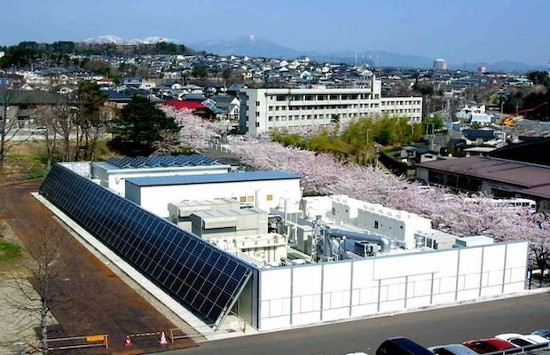In July, the U.S. city of San Diego started to install microgrids to power municipal buildings using solar panels. The projects will serve eight locations and be operational by the summer of 2024.
These are standalone power grids that will serve several purposes:
- They will be islands of clean power should the state’s grid experience outages allowing for rapid restoration and recovery.
- They will provide onsite energy storage that can be fed into the microgrid during peak demand.
- They will reduce greenhouse gas emissions (GHGs).
San Diego isn’t alone in building microgrids running on renewable energy. Across the U.S. many states and cities are seeking energy independence from the grid in the face of the growing threat from extreme weather events to the national grid. Here are a few of the projects in place or planned.
Jersey City, New Jersey, beat them to the punch with the first self-sustainable municipal microgrid in the U.S. A 1.2-Megawatt solar array installed in 2020 is powering critical city facilities and its fleet of five electric garbage trucks. The plan is to electrify the entire fleet as well as police vehicles, and provide power to 24 EV-charging stations located in municipal parking lots. This isn’t the only New Jersey microgrid project. The state has created the Town Center Distributed Energy Resources Microgrid Program (TCDER) with feasibility studies currently underway in 13 cities and towns.
Los Angeles is installing a 7.5 Megawatt solar and storage microgrid to provide power to EV charging stations throughout the greater metropolitan area along with a microgrid to power the Washington Bus Yard, the latter described as one of largest EV charging stations in the U.S. to be powered by a microgrid that combines renewable solar and storage. And in the city of Santa Monica in the heart of Los Angeles, a microgrid project powered using renewables and storage will provide electricity to a 6-hectare (14.7-acre) site that houses trash collection, street maintenance, fire department maintenance and traffic operations.
Tampa, Florida is testing the waters with a four-year pilot project that involves a small renewable-energy-powered microgrid to be used in a new housing development. Each home is outfitted with rooftop solar, a battery storage unit about the size of a normal HVAC system and distributed controls. Main grid power outages will not affect the microgrid. The system being implemented was first tested at the Kirkland Air Force Base in Albuquerque, New Mexico, where it has been operating since 2019.
Columbus, Ohio has five microgrid pilot projects underway. The first focused on securing clean drinking water for city residents and went operational earlier this year. The microgrid is powered by a 100-kilowatt solar array and 440 kilowatts of battery storage. Other locations in Ohio are planning to build up to 6 microgrids including a proposed implementation in Cleveland and other parts of Cuyahoga County.
Alliant Energy, a Madison-based utility in Wisconsin, has implemented a microgrid producing 400 Kilowatts of renewable energy backed up by 3,200 Kilowatt-hours of energy storage for the village of Boaz, a community with a population of 156. This test project will serve as a blueprint for other communities in Wisconsin and neighbouring Iowa.
Microgrids are becoming very popular in California with projects at the University of California, Berkeley, Kaiser Permanente hospital in Ontario, California, in greenhouse operations and farms, at military sites like Fort Hunter Liggett in Jolon, a community microgrid for Pacific Palisades, and a Pacific Gas & Electric (PG&E) Ecoblock project for the city of Oakland. All of these feature renewable solar backed up by battery storage with multi-hour operational capacity should the utility grid fail.
Elsewhere in the world, microgrid projects are already implemented or being developed to power communities in Australia, the United Kingdom, several African states, and many islands that currently rely on the burning of fossil fuels to produce electricity.










This is an extraordinary step towards a more sustainable future! The deployment of the first microgrid in the Middle East by Siemens in Doha is a remarkable example of innovation and leadership in the energy sector. This venture not only showcases Siemens’ commitment to advancing clean energy solutions but also paves the way for more regions to embrace resilient and eco-friendly energy systems.